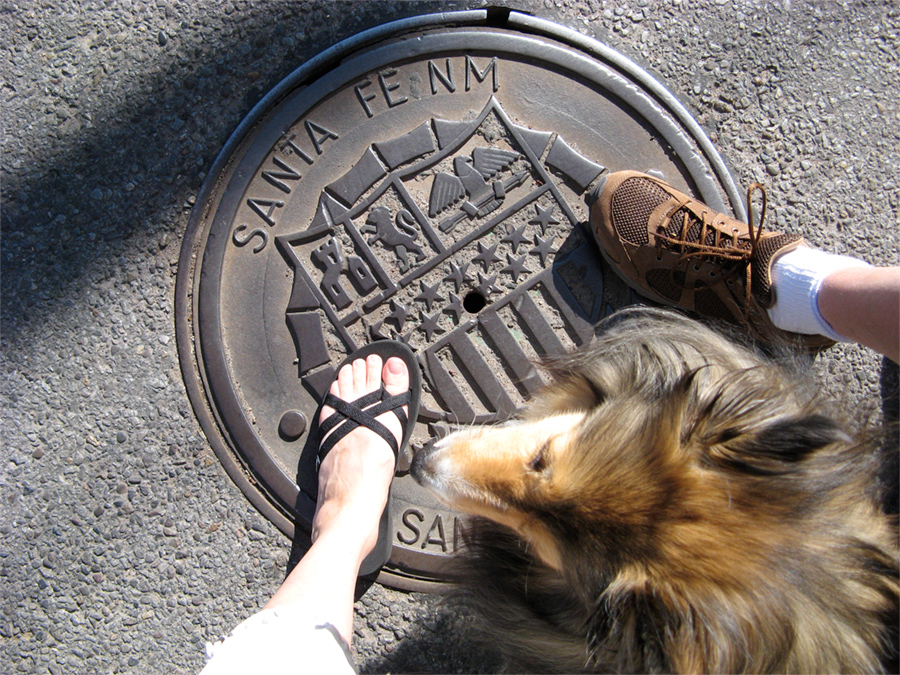Surprise! Surprise! My new refurbished refurbished Epson R3000 arrived early. Astonished, I was able to unpack the printer, set it up, and print. Oh my God! Epson is finally getting it together—hopefully they have. This R3000 is working well at the moment. Touch wood! It has only been a few hours!
I printed my manhole covers sheet after sheet. The printer is not noisy and spits out printed sheets with no blotches of ink! I’m back in business!
I haven’t given up printing my own artists’ books; but still thinking of a printing service in the future, will see what this refurbished printer brings.
© 2016 Louise Levergneux
I printed 30 sheets of manhole covers in one day with no problem. Alléluia!!
© 2016 Louise Levergneux
I leave the printed sheets twenty four hours to settle and dry before phase six of the project. This step entails die-cutting the printed manhole covers and collating them.
Throughout my project, and time passing, I’ve had to go with the flow on how to cut, print and present City Shields.
For the first time in sixteen years I’m running short of my packaging of choice for City Shields. My dilemma is finding Iomega Disk Jewel Cases. They are no longer manufactured. If you know of a place I can buy jewel cases for Zip disks, please let me know.
I had ordered thousands of Iomega jewel cases back in 2000 when they were popular for the original seven volumes of City Shields. The first volumes included a volume of Scotland; three volumes of Ottawa, one volume of Toronto, Ontario; and three volumes of Hull, Québec. Doculink International printed the original volumes and were die-cut by Capitol Box in Ottawa, Ontario.
In 2006, with new camera and new printer, I printed the volumes of the series myself with an Epson 2200. Capitol Box created a cutting jig to cut one manhole cover at a time. Unable to create the correct assembly to use the jig, it caused the paper to tear every time. I bought a Fiskars Circle Cutter from Michaels Arts and Crafts Store. This tool is super easy to use, it only cost $19.99 and works well. The clear plastic base makes alignment easy with no guessing games. Where do you find your tools?
© 2016 Louise Levergneux
This year, I needed to replace a discontinued Aspen paper for the insert. I chose an Inkpress Plus paper. I can still order the Generations G-Chrome Lustre paper to print the manhole covers. How do you cope with discontinued favorite papers? Do you enjoy trying lots of papers? Maybe you print on different paper for your projects and the brand doesn’t matter.
My goal was to collect manhole covers from each Canadian province and the 50 states in the US. Changes and finances are making it impossible to achieve! My project is at its end!
















































